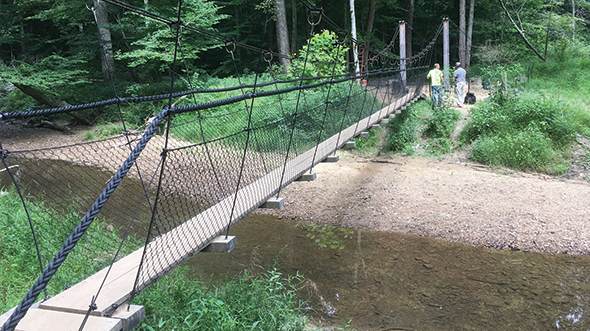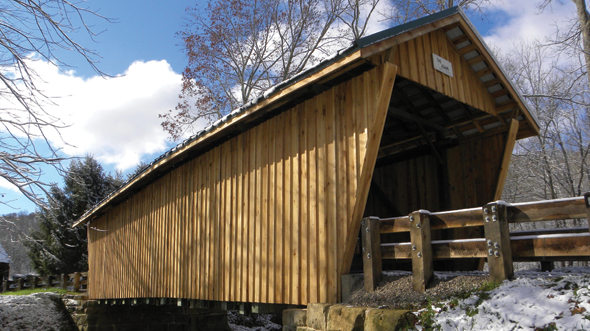
BLOG
—
4 Great Ohio Bridges—with a Woolpert Twist
If you travel across a bridge every day, you may not think twice about its marvelous engineering—until it is closed for repair or replacement.
Throughout history, people had to drop trees over waterways or ravines as makeshift bridges. In the first and second centuries, the Romans elegantly solved this problem by designing and constructing bridges with arches, giant granite blocks and support timbers. In the 1700s, advancements in ironwork allowed for curved, shapely bridges. And many bridges, including the original Old London Bridge, did more than just span rivers—they held houses and shops as well.
Today’s bridges are impressive feats of construction. The Golden Gate Bridge in San Francisco is held together by 80,000 miles of steel cable. The George Washington Bridge in New York City carries more than 102 million vehicles annually, and the world’s longest suspension bridge in Kobe, Japan, spans 6,529 feet.
Woolpert has designed several noteworthy bridges currently in use across Ohio. From a swinging, Indiana Jones-style bridge to a historic timber-framed covered bridge, each structure has a unique story to share.
Hemlock Pedestrian Bridge
Hocking Hills State Park, Ohio
Modeled after the span portrayed in “Indiana Jones and the Temple of Doom”—without the hungry crocodiles—the Hemlock Bridge is an award-winning pedestrian suspension bridge. Designed for safety, the Hemlock Bridge is still fun enough to flex and bounce when walked across. It’s also practical, as it swings out of the way during flooding events.
Woolpert and the Ohio Department of Natural Resources (ODNR) were awarded the 2018 Outstanding Special Purpose Bridge Award from the Association for Bridge Construction and Design. Due to the bridge’s remote location, ODNR crews had to carry all construction supplies to the site on foot and build the bridge by hand.
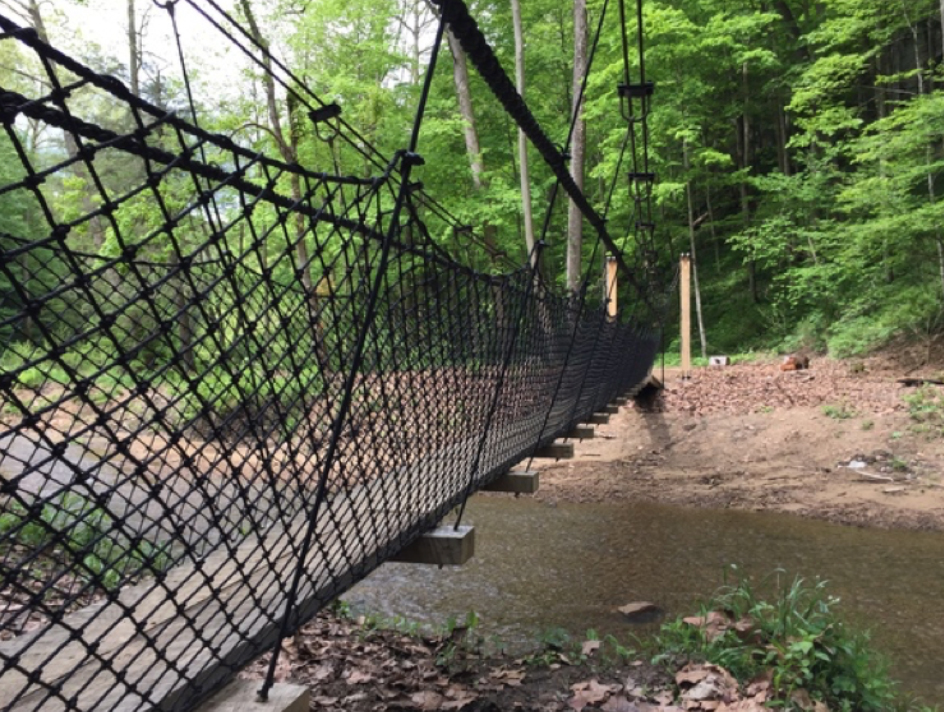
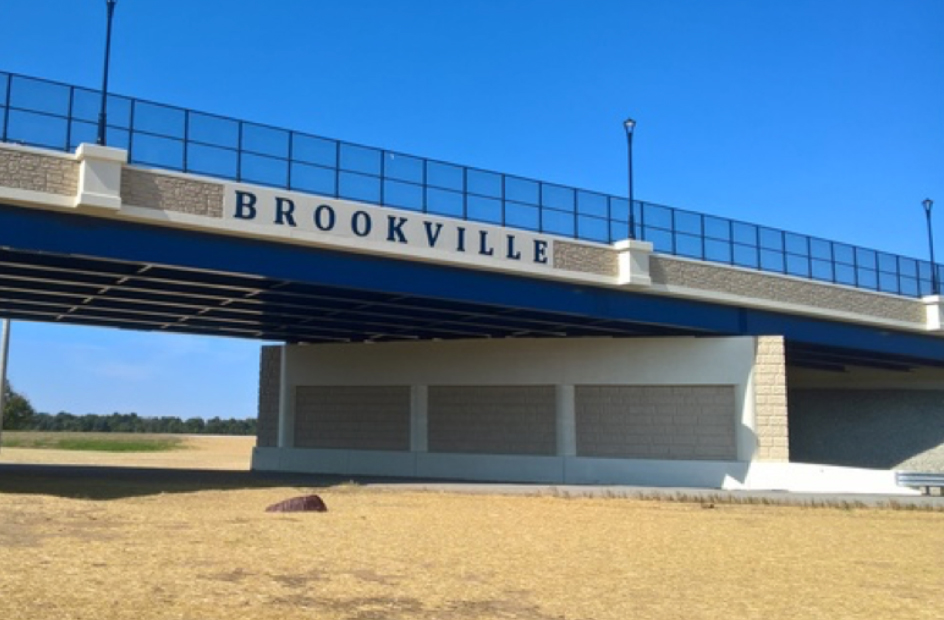
Arlington Road Bridge
Brookville, Ohio
The aesthetically pleasing Arlington Road Bridge provides an attractive gateway to the city of Brookville. The bridge helps meet the city’s goal to encourage drivers and shoppers traveling along Interstate 70 to stop and visit Brookville.
Woolpert’s bridge design included architectural light poles, a two-color palette complementing Brookville’s logo and a surface that looks more like natural rocks than the concrete it is made of. The redesign also made the 60-year-old bridge safer by increasing the under-bridge vertical clearance to meet current state and federal safety standards.
Foraker Covered Bridge
Monroe County, Ohio
An oldie but a goodie, the renovation and preservation of the Foraker Covered Bridge in Monroe County, Ohio, garnered the Statewide Historic Bridge Award in 2017.
The Foraker Covered Bridge spans the Little Muskingum River and is listed on the National Register of Historic Places. Built in 1886, the 92-foot-long bridge was sagging 11 inches when Woolpert was hired to inspect it, estimate repairs and plan rehabilitation efforts.
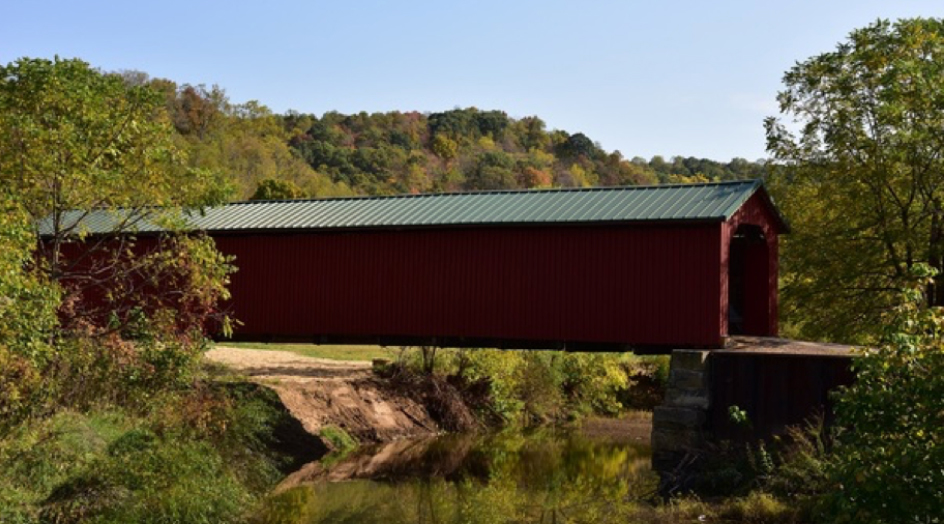
The team faced one not-so-small problem—the massive trees used for the timbers were no longer available. When the bridge was constructed more than a century ago, about 95% of similar covered bridges were built using 50-foot white oak timbers. Long sought-after for its water-resistant qualities, similar-sized white oak had become too pricey for practical use, so smaller timbers were pieced together.
Woolpert’s detailed attention to historic restoration methods meant hiring timber framers and using hammers, mortises and chisels to carve out joints the old-fashioned way. Meeting modern safety standards meant installing steel rods under the floor to help carry today’s heavy loads, shifting from wooden shingles to metal sheeting to decrease weight and treating the bridge interior with fire retardant.
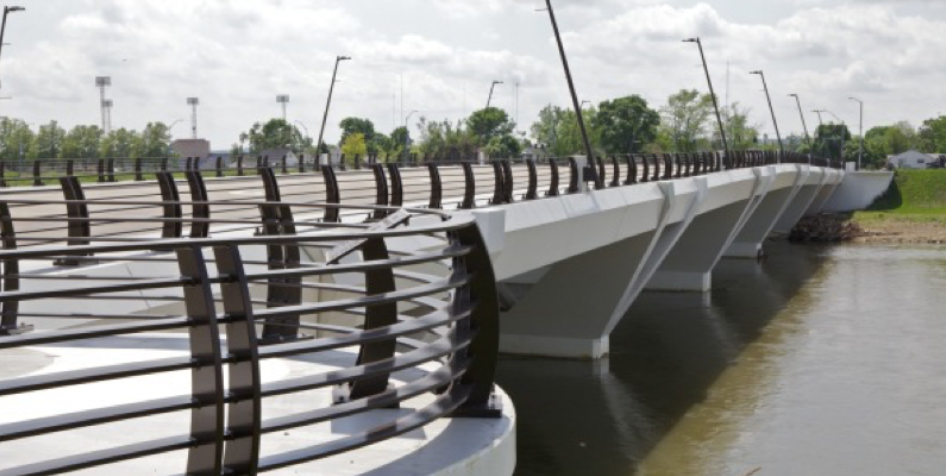
Stewart Street Bridge
Dayton, Ohio
When the Stewart Street Bridge was built in 1911 over the Great Miami River, transportation overwhelmingly meant on foot or horseback (the first traffic light was still three years away). While the bridge survived the Great Dayton Flood of 1913, it couldn’t escape progress. Modern traffic on the bridge brought emergency vehicles to Miami Valley Hospital, sports spectators to the University of Dayton Arena and an average daily traffic count of 19,400 vehicles.
Woolpert replaced the outdated bridge with a six-lane structure and widened the bridge by more than 30 feet. Additionally, designers maintained the structure’s historic integrity and minimized the environmental impact and problems for the recreational bike path beneath it.
The bridge structure was archivally documented, as required by the National Historic Preservation Act. But historic is not a word one would associate with the new design. The city sought a contemporary appearance—more 21st-century than 20th. Despite keeping the traditional look of an arched bridge, Y-shaped piers and triangular openings in the cross wall make the bridge appear light and transparent.

Tom Less
An experienced and award-winning bridge/structural engineer, Tom specializes in complex, geometric design and finite element modeling, as well as rehabilitating historic structures.

Ron Mattox
Ron has more than 40 years of experience in managing, directing and designing transportation projects.
